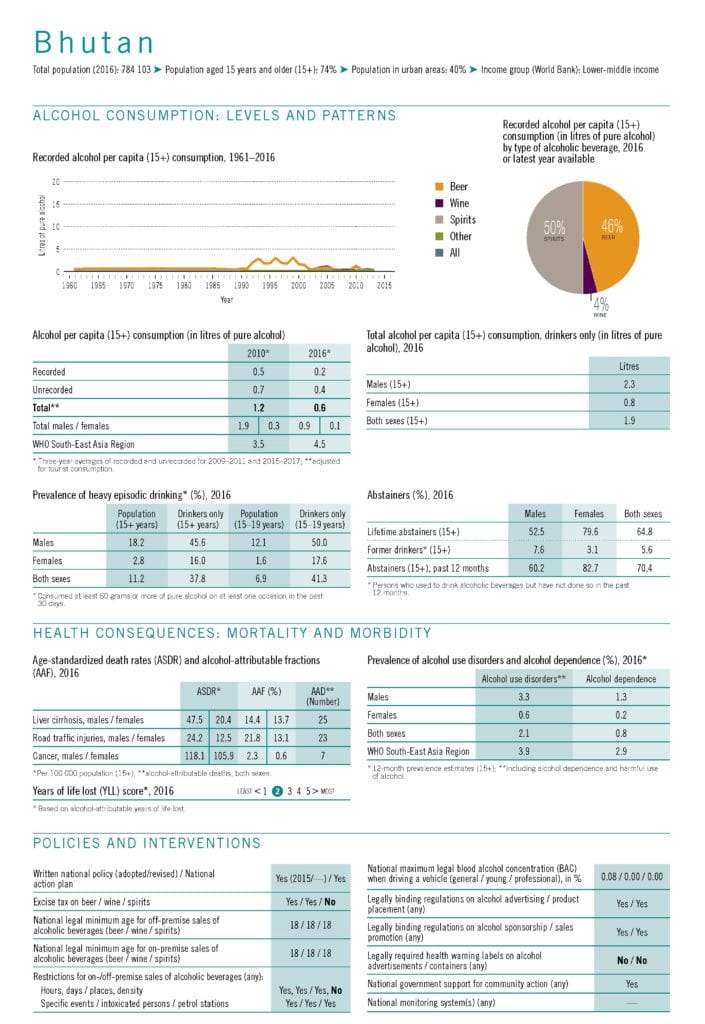The Bhutanese cabinet recently allowed alcohol to be served in restaurants without requiring a separate bar license. Questions regarding this move at the National Council put health minister Dechen Wangmo in a tough spot.
The burden and cost of alcohol to society is high in Bhutan. It is estimated that the direct cost of treating one patient with an alcohol problem is Nu 122,000. This contributes to rising healthcare costs along with rising social and economic costs of alcohol on Bhutanese citizens.
Alcohol harm in Bhutan
Bhutan has traditionally been a population where the majority of people live alcohol-free. Thus, increasing alcohol availability threatens to introduce increased alcohol problems to this culture. Already alcohol is starting to become a problem in the country, as can be seen by the levels of binge alcohol use.
- 45.6% of men over the age of 15 years who consume alcohol engage in binge alcohol consumption.
- This is even higher among young men between 15 to 19 years of age who consume alcohol with 50% engaging in binge alcohol consumption.
As Movendi International previously reported even before the new law was passed by the cabinet, high alcohol availability was a problem in Bhutan.
Bhutan needs to reduce the availability of alcohol not increase it, to reduce the growing burden of alcohol products on people. A recent survey found:
- In eastern Bhutan more than 58% of the respondents were living with an alcohol use disorder or addiction.
- In Thimphu, of the 36.4% of adults who had consumed alcohol in the past year, 10.5% engaged in binge alcohol use.
- In rural areas, as much as 50% of the grain harvest of each household is used to brew alcohol each year.
- Underage alcohol use is also a serious problem.
Reducing alcohol availability such as by limiting the number and density of sales outlets and hours of operation is one of the World Health Organization’s recommended alcohol policy best buy solutions to reduce alcohol use and resulting harm.
The other two best buy measures are increasing prices of alcohol products through taxation and bans or comprehensive restrictions on alcohol marketing.
It is crucial that Bhutanese policymakers give alcohol policy solutions the priority they should be given to prevent educe alcohol harm and uplift public health and well-being of the Bhutanese people.

